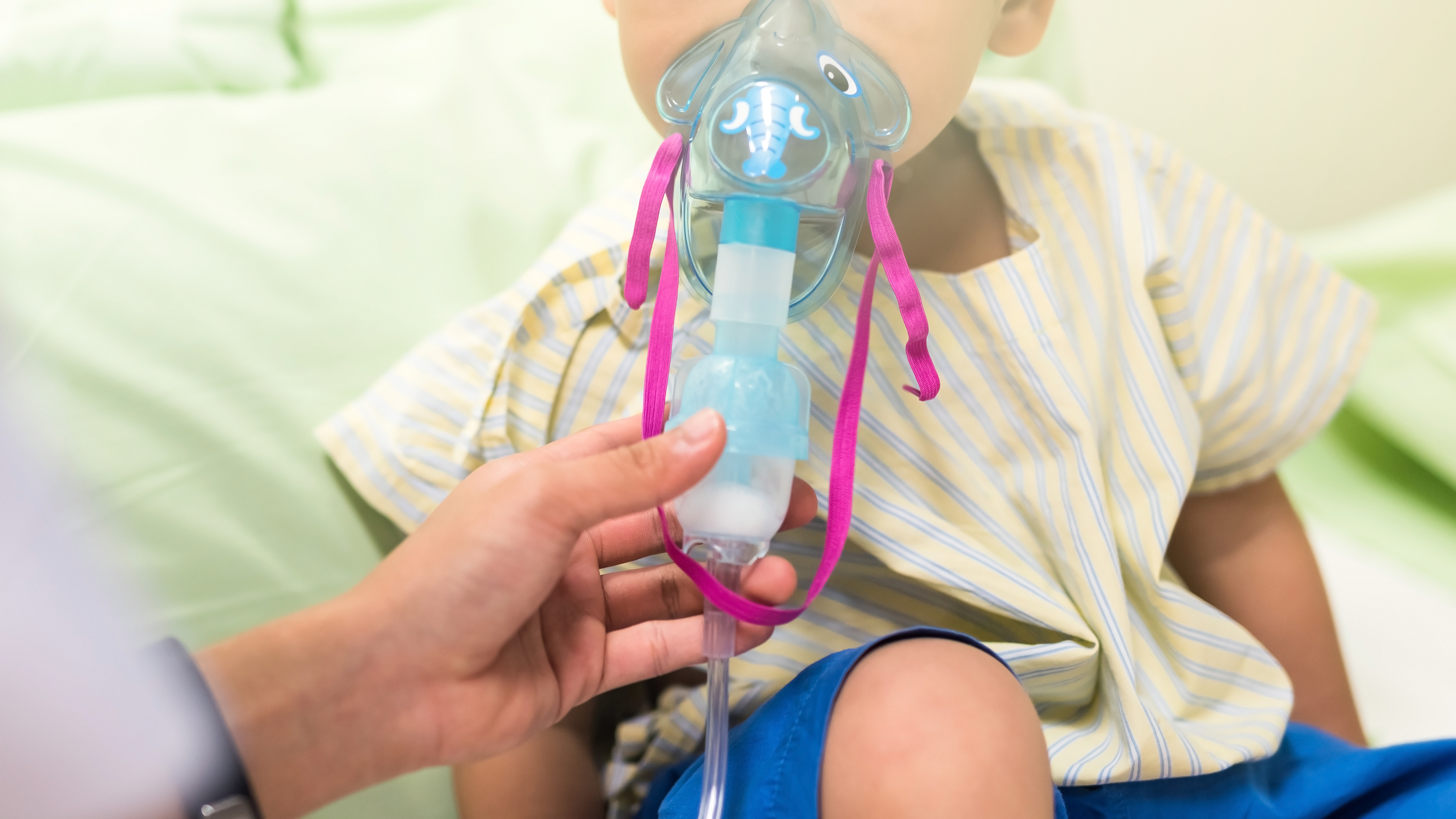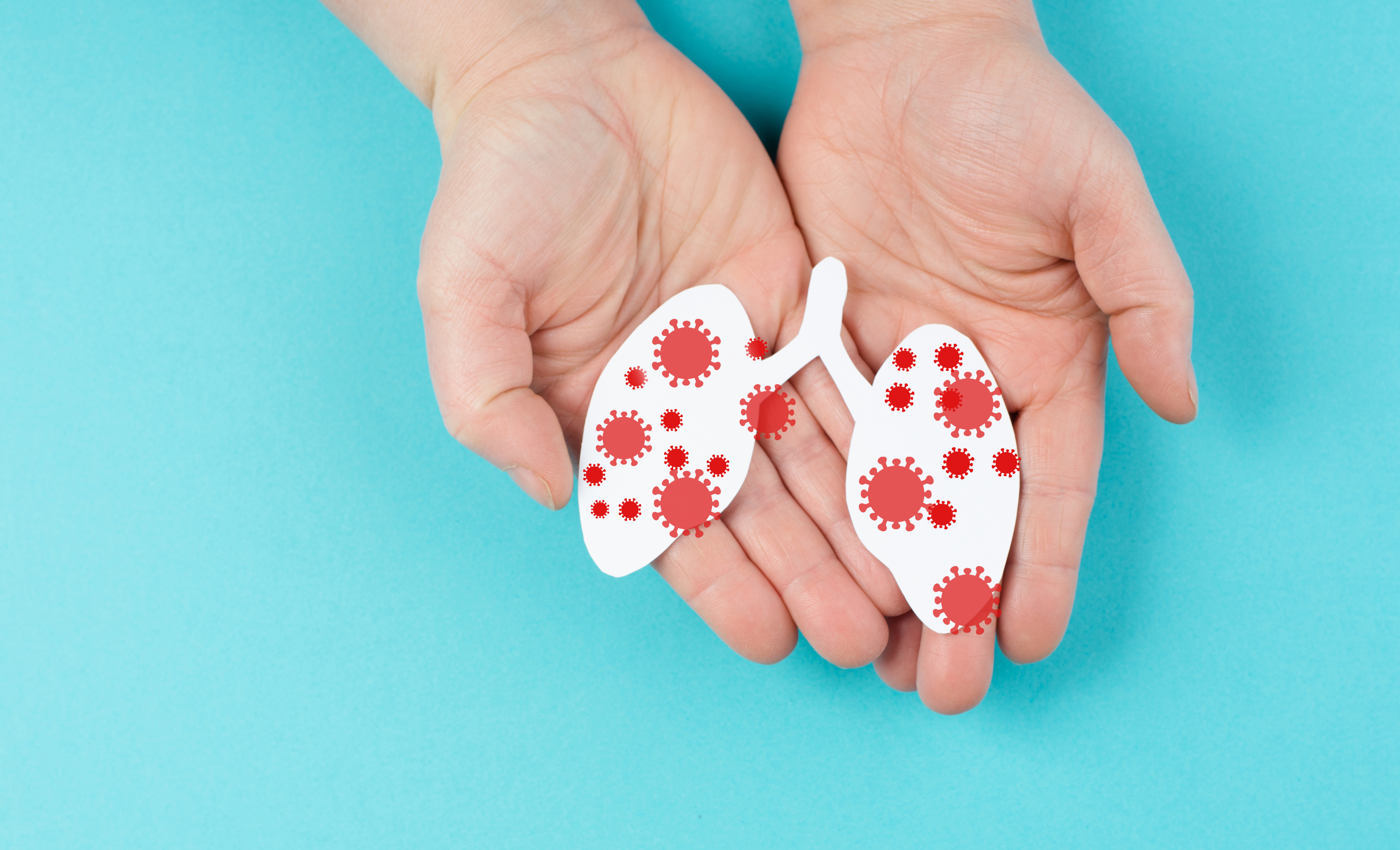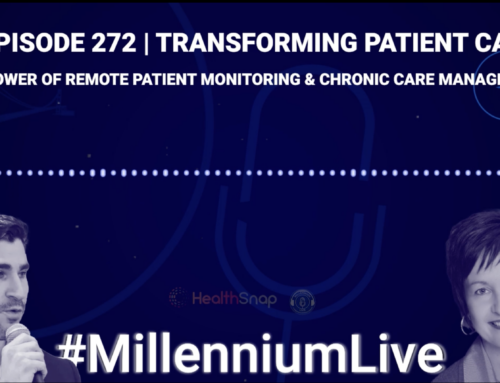Respiratory syncytial virus (RSV) is one of the leading causes of respiratory illness in children. RSV infections are so common in the U.S. that a vast majority of children are infected with the virus by the time they turn two.
RSV infections in healthy children and adults tend to be mild in nature and the symptoms are no different than a common cold. Most people do not require any treatment and recover within a week or two. Stemming from this, in infants, older people, and people with a weakened immune system, RSV infections can be serious and lead to potentially life-threatening complications.
Data shows that there has been in a surge in RSV infections across the country in the recent past. Experts say that after two years of masking and social distancing, many people’s immune systems might not be as robust and as prepared to fight RSV infections.
Also, children born during the two years of COVID-19 lockdowns might not have been exposed to RSV at all. Once the restrictions were lifted, they were exposed to RSV for the first time, which might explain why cases are surging across the country now.
Experts worry that the combined burden of RSV infections, flu, and COVID-19 might be too much to bear for the healthcare system, which is already stressed beyond its capacity due to the devastating impact of COVID-19.
One of the most effective ways to reduce the stress on hospitals and manage RSV infections effectively is to monitor patients and provide the care they need in an outpatient setting with the help of Remote Patient Monitoring (RPM).
In this guide, we will take an in-depth look at RSV infections and the critical role RPM can play in monitoring people with RSV infections and managing their symptoms in a timely, efficient and cost-effective manner to improve patient outcomes.
What is RSV and How Does it Spread?
RSV is an RNA virus whose structure is similar to the influenza A virus. It primarily infects the nose, throat, breathing passages, and lungs. The most common RSV symptoms include runny nose, sneezing, coughing, reduced appetite, and fever.
RSV is transmitted from one person to another through respiratory droplets that are exhaled while breathing, talking, sneezing, and coughing. The virus can survive on hard surfaces like door knobs, tables, keyboards, and crib rails for several hours. If you touch a contaminated object or surface and then touch your eyes, nose, or mouth, you can be infected. Data shows that on average, a single RSV infection will lead to at least three more infections.
Normally, people who are infected with RSV remain contagious for a period of 3 to 8 days. People who are immunocompromised, on the other hand, can remain contagious for as long as four weeks. During this time period, the infected person can transmit the virus to other people – even if they do not exhibit any of the aforementioned symptoms.
Who is at an Increased Risk of Severe RSV Infection?

People who are at the highest risk of severe RSV infection include:
- Infants (particularly infants less than six months old)
- Babies that are born premature
- Children with congenital heart, lung, and neuromuscular diseases
- Children and adults with compromised immune systems – due to a disease, disorder, or due to taking medications that suppress the immune system
- People over the age of 65 – particularly those with chronic heart and lung problems
A severe RSV infection can lead to bronchiolitis and pneumonia. Bronchiolitis is a condition in which the bronchioles (small airways of the lungs) become inflamed and congested. Pneumonia is a condition in which the lung tissue becomes inflamed and the air sacs in the lungs are filled with fluid and pus.
Data from the Centers for Disease Control and Prevention (CDC) shows that RSV infections are the leading cause of bronchiolitis and pneumonia among infants under the age of 1.
Severe RSV infections can also trigger and intensity the symptoms associated with other chronic health problems. For instance, when a person suffering from asthma gets infected with RSV, they might experience asthmatic attacks more frequently. Similarly, RSV can also worsen the symptoms associated with chronic lung disease and congestive heart failure.
One of the reasons why the RSV related hospitalization rate among young children (particularly among infants under two months old) is considerably higher compared to adults is the size of their airways. The airways of infants are considerably smaller than that of adults, as a result of which even a mild case of inflammation and swelling can restrict the airflow and make it difficult for them to breathe.
Impact of RSV Infections on the Healthcare Sector
Data shows that RSV infections are among the most common causes of respiratory illnesses in young children as well as older adults. Every year, RSV infections cause the deaths of 100 to 500 children in the US RSV infections in children also lead to more than 1.5 million outpatient visits, 520,000 emergency room visits, and 58,000 hospitalizations every year.
Among older adults, RSV causes 177,000 hospitalizations and 14,000 deaths every year. The annual cost of treating respiratory infections caused by RSV among older adults is estimated to be $103 million.
Experts say that by incorporating Remote Patient Monitoring programs, RSV related hospitalization rate can be reduced greatly, which in turn can result in improved patient outcomes.
How Remote Patient Monitoring can Help in the Management of RSV and its Potential Complications
Remote Patient Monitoring (RPM) – also known as remote physiologic monitoring – is a healthcare delivery method which involves the use of technology to monitor the health condition of patients in an outpatient setting.
The most common types of Remote Patient Monitoring devices that are used to monitor patients include weight scales, blood pressure monitors, blood glucose monitors, and pulse oximeters. RPM generally involves four steps. These include:
Data Collection
In this step, the patient’s health data is collected with the help of RPM devices. A wide range of data including the patient’s weight, blood pressure, blood glucose levels, and oxygen saturation in the blood are collected on a constant basis to monitor the patient’s condition.
Data Transmission
In this step, the patient health data collected by RPM devices is transmitted to the healthcare provider. Most RPM devices available on the market today are capable of transmitting health data in real time.
Data Evaluation
In this step, the healthcare provider analyzes their patient’s health data and determines whether the numbers are within the safe range (the upper and lower threshold values set by the healthcare provider). If the patient’s health data falls outside the safe range, the healthcare provider is immediately notified of it, so that they can decide the next course of action to be taken.
Taking Action
In this step, the healthcare provider takes steps to provide medical assistance to the patient. If the circumstances only warrant a change in the treatment, the healthcare provider will make the necessary changes in the treatment. In case of an emergency, emergency responders will be notified and the patient will be provided with immediate medical assistance.
Role of RPM in RSV Treatment and Management
Data shows that RSV infection can lead to acute exacerbations in high-risk patients like infants, people with chronic heart and lung problems, older adults, and people with impaired immune systems. These acute exacerbations are marked by a significant increase in the severity of the symptoms, which can have long lasting effects.
The acute exacerbations associated with RSV can not only affect the individual in question, but also the healthcare system as a whole. For the infected patient, these acute exacerbations can lead to an accelerated decrease in lung function, an increased risk of life-threatening complications, and a decrease in the overall quality of life.
The high rate of hospitalization and readmission associated with these acute exacerbations can take up more hospital resources, which can lead to a shortage of resources needed to treat other chronic and acute conditions. Also, the high rate of admissions and re-admissions associated with RSV can also lead to physician burnout and overburden the healthcare system, which is already struggling to cope with a shortage of qualified physicians in primary care as well as specialty care.
RPM as a technological solution can play a key role in detecting and preventing the acute exacerbations associated with RSV infections. Having real-time access to patients’ health data can make it easier for healthcare providers to closely monitor the patients’ symptoms and provide the medical care they need, which in turn can reduce the risk of hospitalization and the need for emergency medical services to a great extent. As a result, the overall costs associated with treating RSV can be reduced significantly – which can benefit the patients as well as the healthcare system as a whole.
Remote Patient Monitoring for Bronchiolitis and Pneumonia Management
Data shows that RSV infection is the leading cause of hospitalization among children under the age of 1 in the country. The risk is particularly high in premature infants, as their lungs tend to be underdeveloped and the inflammation caused by RSV can severely restrict airflow. It’s one of the reasons why symptoms like wheezing and labored breathing are so common in young children infected with RSV.
The shortage of pediatric ICU beds in hospitals across the country can make it harder for young children infected with RSV to get the medical care they need in a timely manner. It can increase the risk of potentially life-threatening complications significantly. It’s why early detection and management of RSV related symptoms in young children is so important.
Experts say that it’s entirely possible to manage RSV at home. By implementing a digitally enabled remote physiologic monitoring program, parents can make sure that their children get the medical care they need at home.
RPM can be particularly effective in preventing, detecting, and managing pneumonia in people infected with RSV. In patients with a mild case of RSV, implementing an RPM program can make it easier for healthcare providers to detect the early signs of pneumonia and prevent it altogether. In patients with pneumonia, RPM can enable healthcare providers to monitor the patient’s health status, assess the severity of their symptoms, and develop a personalized treatment plan to achieve optimal results.
Remote Patient Monitoring devices such as pulse oximeters can accurately detect the level of oxygen in the patient’s blood, based on which healthcare providers can decide the right level of treatment and care needed for the patient.
Whenever there is a drop in the oxygen saturation level, healthcare providers can alter the treatment plan or take other steps to treat the patient and prevent the symptoms from worsening.
One of the biggest advantages of implementing an RPM program for RSV management is that healthcare providers can be immediately notified of pneumonia related emergencies – or any other RSV related emergency for that matter – through Population Health Management (PHM). It is a built-in feature which is designed to keep track of the patient’s health data and send notifications to the healthcare provider whenever the patient ventures outside the safe range.
The alerts generated by PHM are generally categorized into low, medium, and high – depending on the nature and severity of the emergency. Based on the alert, the healthcare provider can decide the level of care needed for the patient.
How RPM Can Benefit RSV Patients and Care Providers?
Experts say that RPM can play a critical role in the management of RSV infections and other related conditions. The incorporation of RPM programs into the treatment and management of RSV infections can result in a wide range of benefits for patients, healthcare providers, and the healthcare system as a whole.
Improved Patient Outcomes
One of the primary reasons why RPM is being increasingly adopted by healthcare providers across the country is that it can improve patient outcomes to a significant extent. Having access to real-time biometric data of patients can make it easier for physicians to assess the symptoms, create the right treatment plan, monitor the patients’ response to the treatment, and make changes to the treatment plan as and when required.
Early Detection and Intervention
One of the biggest challenges associated with respiratory problems – particularly in young children – is intervening at the right time. Any delay in medical intervention can significantly worsen the symptoms and lead to complications that might require emergency medical care.
This problem can be avoided to a great extent with the help of RPM programs. The implementation of a digitally enabled RPM program as soon as the patient is diagnosed with RSV can make it easier for the healthcare provider to detect and treat symptoms before they worsen. As a result, the risk of RSV related complications like bronchiolitis and pneumonia can be reduced significantly.
Reduces the Need for In-Person Visits
Patients with RSV often need to visit their doctors regularly for follow-up treatments. These in-person visits can be time consuming and can be a challenge – particularly for those with limited time and resources. Moreover, in most cases, these in-person visits might be too infrequent for doctors to collect and evaluate the information they need to treat and manage the disease.
With the implementation of a comprehensive RPM program, patients no longer have to visit their doctors for follow-up treatments. Similarly, doctors no longer have to meet their patients in person to assess their health condition. As a result, the dependence on in-person visits can be reduced significantly, which in turn can result in enormous savings for the patients as well as the healthcare system as a whole.
RPM can also make it easier for patients with travel-related constraints to get the medical care they need. Research shows that many people in the US – particularly those do not have a vehicle of their own – are unable to receive the medical care they need due to transportation related barriers including geographic location, long travel times, and the lack of reliable public transportation (riding via public transportation also comes with serious risks). RPM can break these barriers, connect patients with their healthcare providers virtually, and make sure everyone has access to quality medical care.
Improvement in Patients’ Health Literacy
Health literacy is the ability of a person to find, make sense of, and use information in order to make healthcare related decisions for themselves as well as their family members. The higher the health literacy of a person, the more likely they are to make informed decisions about their own health.
Research shows that health literacy plays an important role in determining patient outcomes. People with low health literacy are less likely to comply with the treatment plan recommended by the physician, as a result of which the chances of acute events and re-admissions are extremely high.
RPM services can be an effective tool in improving people’s health literacy – particularly those who live in rural areas and might not have access to reliable healthcare information. By providing condition-specific information through digital platforms, health literacy of RSV patients as well as their care givers can be improved to a great extent.
Empowers Patients about their Own Health Management
In a traditional clinical setting, the only thing a patient is required to do is to comply with the instructions given by the physician. They do not play any role in the treatment and in many cases they are not constantly updated about their condition as well. As a result, they might feel helpless, which in turn can affect their compliance with the treatment.
In a remote monitoring setting, patients play an active role in the management of their disease, which can make them feel empowered. They can take their own vitals, monitor their glucose levels, communicate with their physician, and get updated about the condition frequently. The sense of autonomy that remote monitoring offers can make patients feel like they are in charge of their own health, which can motivate them to comply with the physician’s instructions and manage their condition more effectively.
Improves Communication between Patients and Healthcare Providers
In a traditional clinical setting, the healthcare provider might not be able to communicate effectively with their patient and convey the message they intend to. This can be due to several reasons including language barriers, auditory issues or hearing impairments, and the stress of an in-person visit.
With remote monitoring, the healthcare provider can virtually connect with the patient and meet them right where they are. It can eliminate the stress associated with in-person visits and make the patient feel comfortable, which in turn can improve the effectiveness of the communication between the physician and the patient.
RPM also makes it possible for healthcare providers to communicate with patients with auditory challenges through text messaging. The improvement in communication can lead to improved compliance on the patient’s part and improve outcomes as well.
Reduces Healthcare Utilization
Remote physiologic monitoring provides a reliable alternative to in-person visits and can reduce the risk of hospitalization in RSV patients to a considerable extent. It can result in a significant reduction in healthcare utilization, which in turn can free up hospital resources and reduce the burden on the healthcare system.
Reduces RSV Related Healthcare Costs
The direct and indirect costs associated with RSV infections – particularly in cases that involve acute exacerbations – can be quite substantial. These costs are largely driven by hospital admissions and re-admissions, which often involve emergency medical care and require the patient to stay in the ICU for anywhere from a few days to a few weeks.
By implementing a robust RPM program, healthcare providers can detect the symptoms of RSV related complications at the earliest possible stage and take the necessary steps to avoid acute events. It can greatly reduce the healthcare costs associated with RSV treatment and management. It can be a net positive for the healthcare system in general.
Improves Medication Adherence
It is estimated that nearly 50% of patients with chronic diseases do not follow their physicians’ instructions. In medical terms, this phenomenon is called medication non-adherence. By failing to follow the doctors’ orders and not taking medications like they are supposed to, patients can not only put themselves at risk, but increase the country’s overall healthcare costs as well.
Data shows that every year, medication non-adherence causes 125,000 deaths and accounts for 25% of hospitalizations and 50% of treatment failures in the country. The estimated annual cost of avoidable hospitalizations and treatments resulting from medication non-adherence is $310 billion.
With RPM, patients can get periodic reminders about the medications they need to take and the instructions they need to follow, meet and communicate with their physician virtually as and when they need to, and get all the information they need about RSV and other related conditions they might be suffering from. It can lead to a positive change in patients’ behavior and improve medication adherence. It’s one of the main reasons behind the growing adoption rate of remote physiologic monitoring services across the country.
Reduces the Risk of Re-Admissions
RPM can make it easier for healthcare providers to identify and monitor patients who are at an increased risk of developing RSV related complications like bronchiolitis and pneumonia. By tracking the biometric data of these patients in real time, healthcare providers can alter their treatment plan as and when required and act at the first sign of distress. It can reduce the risk of re-admissions significantly.
Pertaining to this, one of the reasons why the re-admission rate in patients with severe RSV infection is so high is that many patients fail to follow the post-discharge instructions given by their physicians. Experts say that it is largely due to the fact that many patients as well as their caregivers have difficulties in understanding the instructions they are given.
With RPM, healthcare providers can provide detailed, personalized instructions to their patients in the form of short videos, which can be easier to understand for the patients and their caregivers. It can improve medication adherence and reduce the risk of re-admissions to a great extent.
Build an Effective and Successful Remote Patient Monitoring Program for Your Practice with HealthSnap
Remote Patient Monitoring can be an effective way to provide personalized, patient-centric care that can greatly reduce healthcare utilization and costs and improve patient outcomes. With HealthSnap’s Remote Patient Monitoring platform, you can not only meet your patients’ needs more effectively, but also diversify your revenue streams to grow your practice.
Our Virtual Care Platform offers everything you need to build and implement a robust RPM program – from pre-configured cellular RPM devices to virtual care delivery, population analytics, automated RPM billing, AI guided care coordination, and many more.
With our platform, you can increase your productivity, provide the level of care needed for your patients, and achieve optimal results without exhausting your resources or burning yourself out.
Our RPM platform is intuitively designed, easy to use, and can provide you with all the tools you need to provide quality patient care and achieve your chronic care management goals. To find out more about HealthSnap’s revolutionary RPM platform, call us today at 888-780-1872 or schedule a consultation with us.












Leave A Comment
You must be logged in to post a comment.